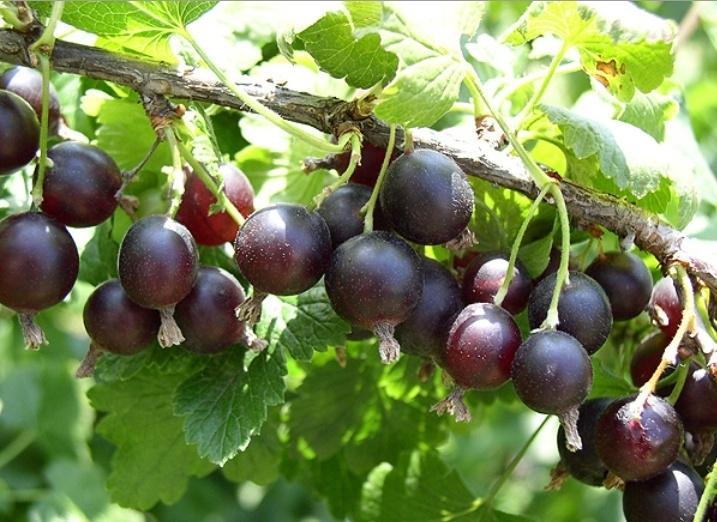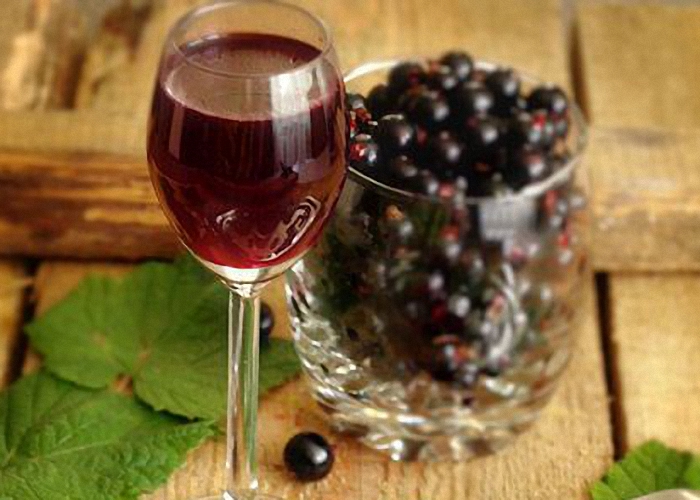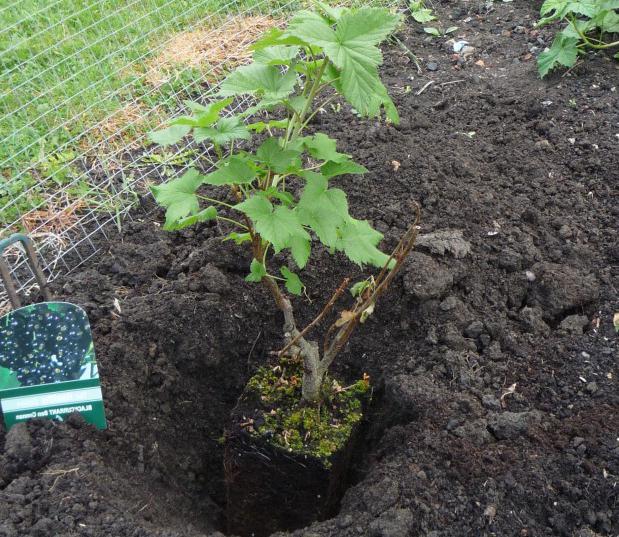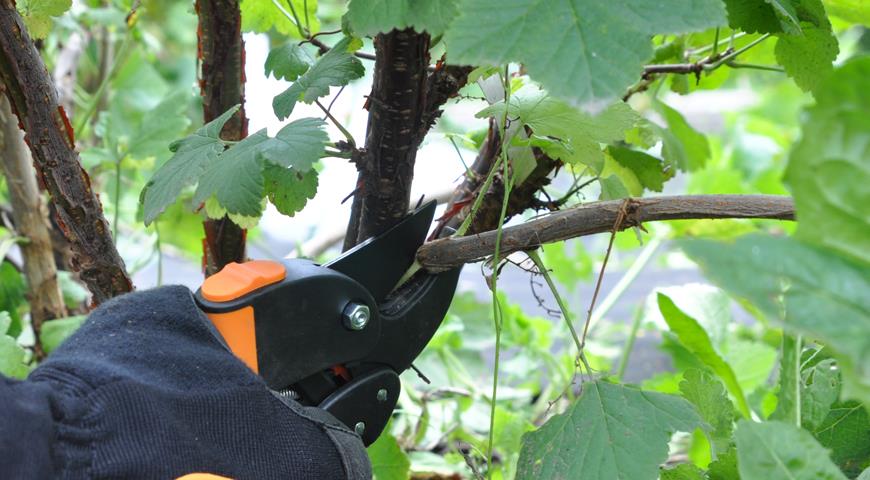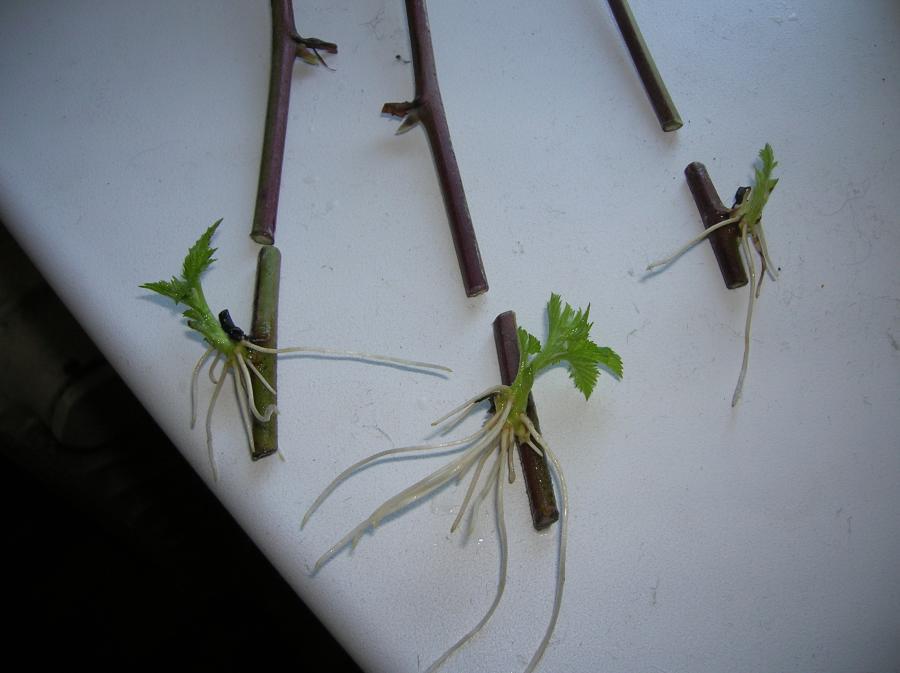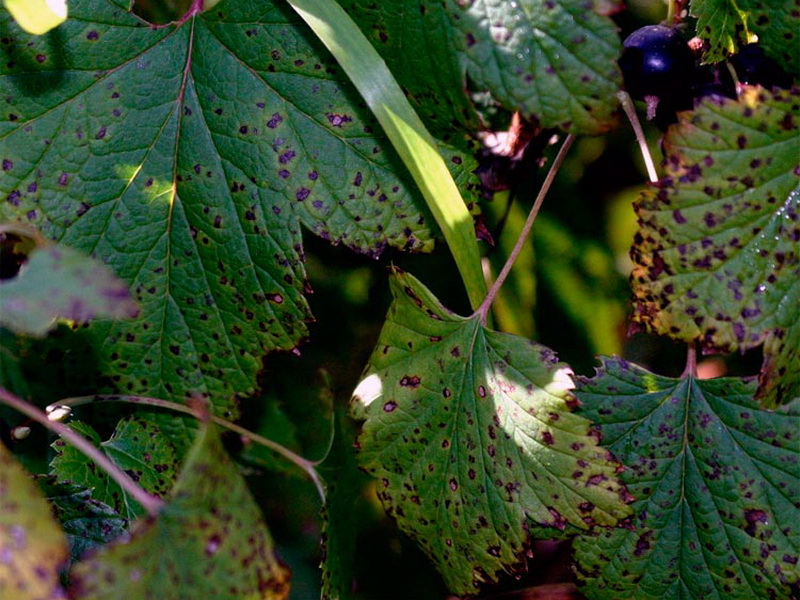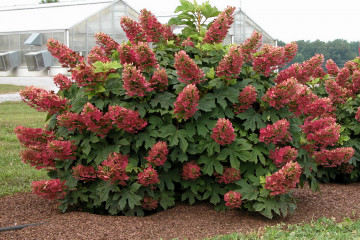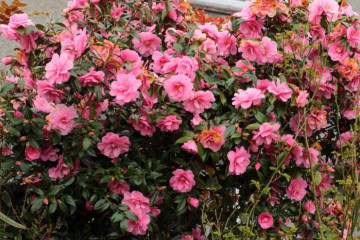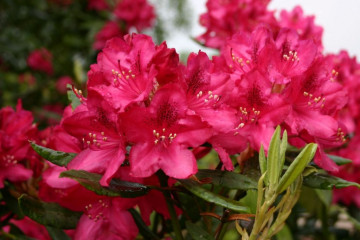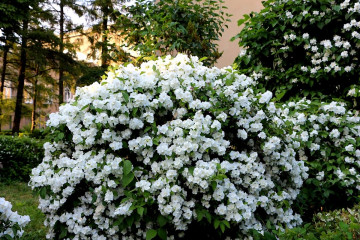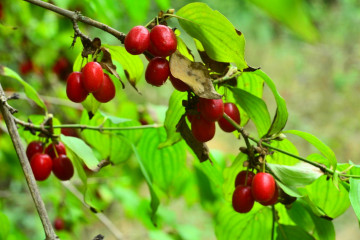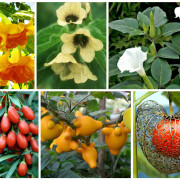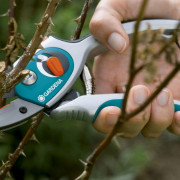A hybrid of currants and gooseberries - planting and caring for yoshta
Content:
Today, breeders offer gardeners many unique varieties of plants that attract attention with new fruits, smells or decorative properties. Such specimens include a hybrid of currants and gooseberries.
Description and characteristics of a hybrid of currants and gooseberries
This type of plant has a difficult history, because it was obtained by crossing.
The origin of the name: gooseberries crossed with currants, as they say
Many gardeners have already heard about the variety obtained as a result of crossing gooseberries and currants. The hybrid, unique in its characteristics, was named yoshta.
Origin story
Even Ivan Michurin was engaged in the crossing of two varieties of berries, but it was the breeder Rudolf Bauer who was lucky. The Yoshta hybrid came to Russia in 1986. After that, the plant was improved and its qualities improved.
Popular varieties
To the question, a hybrid of gooseberries and black currants, as they say, can be answered with a list of variety names. It:
- Rike Hungarian;
- Soviet hybrid Zvyagina;
- Kroma Swedish;
- American Krondal.
In terms of properties, these mixtures are similar to currants and gooseberries. They did not receive strong distribution in the regions of Russia.
The latest developments include varieties that have come to be called:
- EMB. The shrub of English breeders has a height of 1.8 m. Early flowering ensures early ripening. Productivity - 5-10 kg per bush;
- Crown. The variety belongs to Swedish developers. The berries are characterized by a small size, long shelf life on the bush and a weak taste. This variety is used to create a beautiful hedge. Productivity - up to 3 kg per bush;
- Moreau. This shrub has a columnar shape. The berries are similar to cherries, their skin is purple, the aroma is delicate musky;
- Yohimi. The variety can be called the most successful development. It produces good fruiting in Mediterranean countries. Bushes grow up to 2 meters. Productivity - up to 10 kg per bush;
- Rekst. The bushes are formed with erect shoots, the berries are tasty. Productivity - 5-10 kg from one bush.
Characteristics of the bushes
Yoshta is a tall, perennial shrub that does not have thorns. Its powerful, spreading branches are periodically pruned. A plant for good fruiting should have 20 branches (equal number of branches of the 1st and 2nd year of growth). The developed root goes deep into the ground up to 40 cm, so the plant must be planted in open areas.
Characteristics of berries
Berries are formed in a bunch of up to 5 (sometimes up to 9) pieces. Their weight is usually about 3 g.However, in some varieties this figure reaches 5 g. Yoshta berries are similar to ripe cherries. The purple-black skin of the fruit is dense, there are few seeds inside. The flesh tastes sweet and sour with a slight musky undertone.
Berries are in demand in cooking. They are perfectly transported and stored for a long time. The fruits are kept on the branches until autumn, even if they are already fully ripe.
Features of the variety
The variety is unique as it combines the characteristics of currants and gooseberries. In order to understand what the peculiarities of the variety are, the process of fruit ripening, flavor characteristics and other important parameters of the hybrid should be studied.
Ripening period and yield
Ripening of yoshta berries begins in July and lasts 3 weeks. Since the fruits are firmly held on the branches, you should not be afraid that they will begin to crumble.
Depending on the variety, the weight of the berries can be 3-5 g, and the yield with proper care – from 5 to 10 kg per bush.
Taste qualities
Breeders, developing new varieties of hybrids of currants with gooseberries, always strive to improve the taste. As a rule, the berry is characterized by sweet and sour notes with a nutmeg flavor.
Drought resistance and frost resistance
Recent developments of a cross between gooseberry and black currant were aimed at increasing the yield and taste of the crop. An important place was given to frost resistance and drought resistance. The latter varieties have acquired increased frost resistance, undemanding to watering and soil type.
Newly bred hybrids do not like excess moisture and do not require special care before the onset of frost.
Disease and pest resistance
Breeders who undertake to cross currants with gooseberries assign an important place to increasing the resistance of hybrids to hereditary diseases and pests. Therefore, modern hybrids are already less sick than their parents. They are less susceptible to kidney mite attacks, show greater resistance to brown spot and terry.
Using berries
Yoshta berries are a unique storehouse of vitamins and elements useful for the human body. Under their influence, metabolic processes are improved, heavy metals and toxic substances are removed, the immune system is strengthened.
Delicious jelly, preserves and jam are obtained from unripe yoshta berries. Ripe fruits are used to make wines, liqueurs, compotes.
Advantages and disadvantages of the variety
The pluses of a hybrid include:
- the versatility of the plant (planted to obtain berries and as an element of the landscape);
- lack of thorns on the shoots;
- original musky taste;
- frost resistance;
- insignificant root growth;
- undemanding to the soil.
Minuses:
- in comparison with parents gives a lower yield;
- it is advisable to plant gooseberries and currants nearby for pollination;
- the ripening period lasts 2 months.
Planting young seedlings on the site
Planting a yoshta implies some peculiarities. The rules for preparing seedlings and the nuances of their planting will be described below.
Selection and preparation of seedlings
For planting, plants are used at the age of 1-3 years. Saplings must have a developed root system. The good condition of the seedling will be evidenced by dark green leaves.
Time, as well as the landing pattern
Planting can be done in September or April. A ventilated and sunny area will be favorable.
Choosing a landing site
The plant feels comfortable on fertile soils with high aeration. Chernozems, loamy and sandy loam lands are suitable. Since plants prefer a slightly acidic or neutral environment, chalk must be added to the holes when planting.
Site preparation
Before planting (60 days), the areas where the plants will be planted should be dug to a depth of 50 cm. It is important to remove the roots of the weed and stones.
Planting process
The holes are made 25 cm deep. Crushed bricks and ash are always placed on the bottom. The root system of the plant is placed in a hole and buried. A lot of water is poured into the planting site, the topsoil is covered with straw.
Features of seasonal care
Yoshta, like any cultivated plant, requires a certain amount of care. The features of watering and loosening will be described below.
Watering and feeding
Considering that the Yoshta variety belongs to the Gooseberry family, it requires a moderately moist soil. Reinforced watering can be carried out only during a period of severe drought and during the ripening of berries. Experts advise to water the bushes once a week, pouring 10 liters of water over the plant.
Plant feeding is done as follows:
- bird droppings (or mullein) are introduced under the bush in the spring when buds appear. The manure concentrate is diluted in water in a ratio of 1:10 and poured under a bush 10 l / m2;
- during the period of fruit ripening, the bushes are fertilized with superphosphate or potassium sulfate. 40 g of any preparation is applied under the root per 1 m2;
- the autumn feeding of the plant is guided by the quality of the soil. Humus, mullein or mineral fertilizers (for example, nitroammofoska 40 g / m2) can be used.
Mulching and loosening
Since the yoshta root goes into the soil by 40 cm, the loosening procedure carried out after watering can be carried out without the risk of damaging the plant. Experienced gardeners recommend mulching instead of loosening.
Using supports
The hybrid, called yoshta, belongs to the spreading bushes, which becomes a problem during the period of fruit growth. Heavy thin branches begin to bend and touch the ground, which leads to the defeat of the bushes by fungi and infections. To avoid this, experts recommend tying up the bushes.
Preventive treatment
Yoshta, like currants, is easily affected by rust and septoria. Ticks, moth butterflies, aphids and glass moths gladly settle on it. Treatment of soil and seedlings with fungicides (for example, copper sulfate) can prevent such problems.
Pruning
Since the shrub does not emit many shoots, the fruits are formed on last year's pads. Shrub pruning should be done prophylactically in the spring before shoots appear or in the fall after harvest. Broken and diseased branches, as well as those that thicken the bush, should be removed.
Preparing for winter
After harvesting, the plant prepares for winter - extra branches are removed, damaged and diseased pagons are cut off. Long shoots that touch the ground are shortened. After pruning, the bushes are given organic feeding.
Reproduction
When it becomes necessary to propagate yoshta, you can use several methods: dividing the shrub, separating shoots and cuttings.
Shrub division is resorted to if the plant has become old or needs to be transplanted. Then the rhizome of the dug out bush is divided into parts, treated with manganese solution and planted.
Cuttings
This manipulation is carried out using green or semi-lignified branches. In the first variant, the tops of the pagons are cut off and planted.
The length of the cuttings should be no more than 20 cm. The soil, surrounded by twigs, is compacted and watered periodically.
Reproduction by layering
Plant propagation by layering is simple. In the spring, the yoshta shoot is pressed to the ground, laid in a furrow and buried in soil. In the fall, the cuttings are cut off from the bush, dug up and planted in another area.
Pest and disease control
Yoshta, like her parents, is injured:
- powdery mildew;
- anthractosis;
- cercosporosis;
- septoria;
- rust.
Thanks to the simple rules for caring for a hybrid of currants and gooseberries, as well as the special taste of its fruits, it can be increasingly found in the dachas of gardeners. Although not all varieties of yoshta have tasty and numerous fruits, the plant will in any case be a wonderful decoration of the site.
